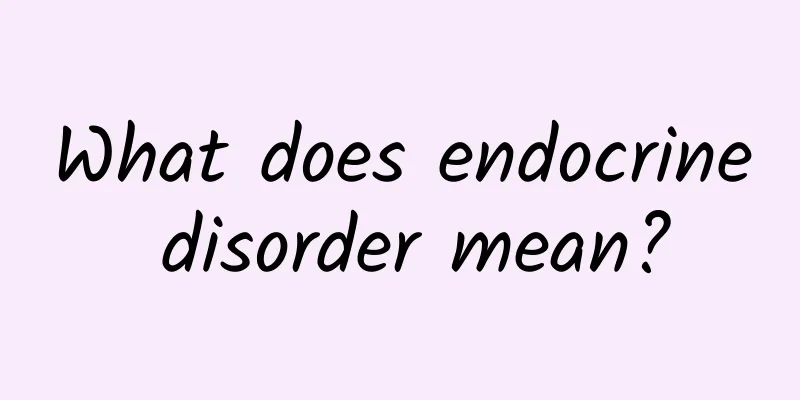Chronic appendicitis

|
In our daily lives, there are many times when diet and fatigue cause certain parts of the body to develop corresponding diseases, such as myopia, keratitis, stomach disease, chronic appendicitis, etc. These corresponding diseases are actually related to our living habits, so a good living habit and attitude towards life can help a person get sick less often and prolong life. The chronic appendicitis mentioned above is mostly caused by lifestyle habits, and because the onset is relatively slow, it requires a certain degree of patience in treatment and one must not rush for results. So, let’s take a detailed look at each aspect of chronic appendicitis. On average, each person has a 7% chance of developing appendicitis in their lifetime, with the highest incidence in people aged 10 to 30, and relatively rare in people under 5 years old and over 50 years old. Diagnosis is easily delayed or misdiagnosed due to atypical symptoms, and the chance of complications is also higher. Men are generally more susceptible to appendicitis than women, but women between the ages of 35 and 44 often have their appendix removed during other abdominal surgeries. The main cause of appendicitis is obstruction of the appendix at the outlet of the cecum, resulting in secondary bacterial infection; however, in another 30% of cases, no obstruction is found, and the inflammation may be caused by viral, parasitic or bacterial infection, trauma or stool retention after surgery. When diagnosing, there are no less than dozens of conditions that need to be distinguished, the important ones include cholecystitis (pain in the right upper abdomen), ulcer perforation (more pain when moving), diverticulitis (a mass can be palpated), partial obstruction of the small intestine (accelerated intestinal motility), and intestinal perforation (slowed intestinal motility). The most important diagnostic tool is still a detailed medical history and physical examination. Abdominal pain that is difficult to define but gradually increases in intensity is the first symptom of typical appendicitis. It usually starts with vague pain in the pit of the stomach or around the navel, which gradually moves to the right lower abdomen. It is followed by abdominal muscle contraction, stiffness, and rebound tenderness caused by fear of touching the abdomen. In addition, non-specific symptoms such as moderate white blood cell count, low-grade fever, nausea, fatigue, constipation or occasional diarrhea are not uncommon. Chronic appendicitis can be treated with intravenous drip, while acute appendicitis must be treated surgically. Give intravenous fluids and antibiotics before surgery. Simple appendicitis can be treated by simply removing the appendix. If appendicitis has perforated and is complicated by peritonitis, abdominal cavity cleaning should be considered and antibiotic treatment is required for one week after surgery. For patients with chronic appendicitis, in addition to receiving drug treatment from the doctor, they also need to pay attention to eating more liquid foods, such as millet soup, noodle soup, etc. Try not to drink broth or eat black fish, because black fish is an irritant and eating it can easily lead to a recurrence of chronic appendicitis. |
>>: Symptoms of chronic hepatitis
Recommend
Can patients with hyperthyroidism eat bayberry?
Can people with hyperthyroidism eat bayberry? Yes...
What to do if female pubic hair itches
For female friends, gynecological diseases are a ...
The efficacy of ginger plaster
What we call ginger paste is a paste-like substan...
Chinese patent medicine for treating tracheitis
Compared with other medicines, Chinese patent med...
How to make authentic homemade donkey-hide gelatin cake
As a delicious and nutritious food, donkey-hide g...
Can chamomile tea cure allergies?
Chamomile is very effective in treating allergies...
What are the transmission routes of viral herpes and what should we pay attention to?
In life, herpes is a highly contagious and highly...
What causes intermittent headaches?
In real life, intermittent headaches are a relati...
What is ichthyosis?
Ichthyosis is usually a chromosomal problem and h...
The word "touch" can completely replace medicine
There are five golden acupuncture points on the g...
Lumbar disc herniation compressing nerves
The waist is very fragile. If you are not careful...
What are the effects and functions of crisp persimmons
Persimmon is a very water-soluble dietary fiber f...
Indications of moxibustion therapy
I have always felt that traditional Chinese medic...
What are the benefits of portable moxibustion? What are the effects?
Chinese medicine is profound and extensive. Its p...
Femoral head traction
Femoral head fractures are not uncommon in clinica...









